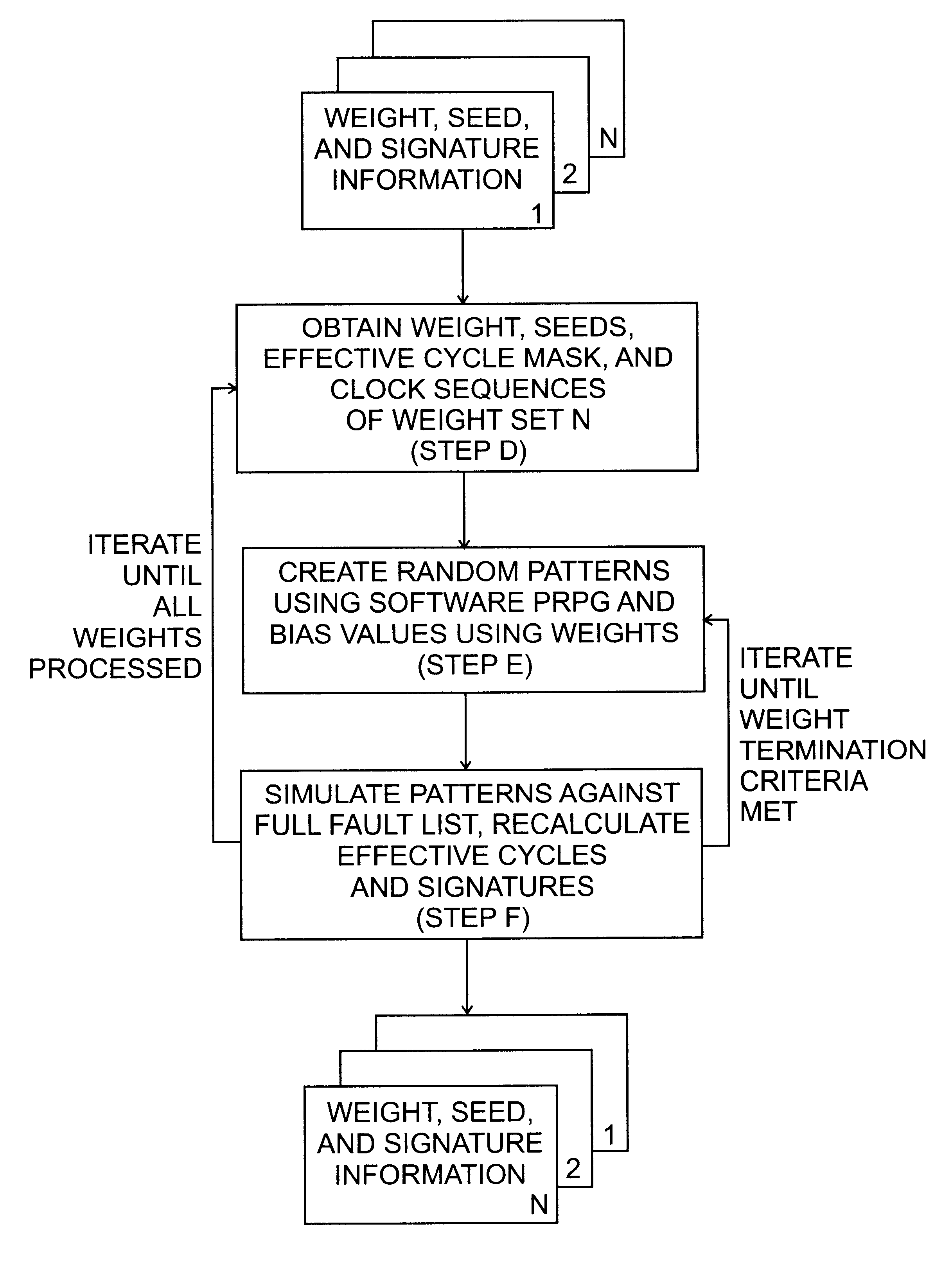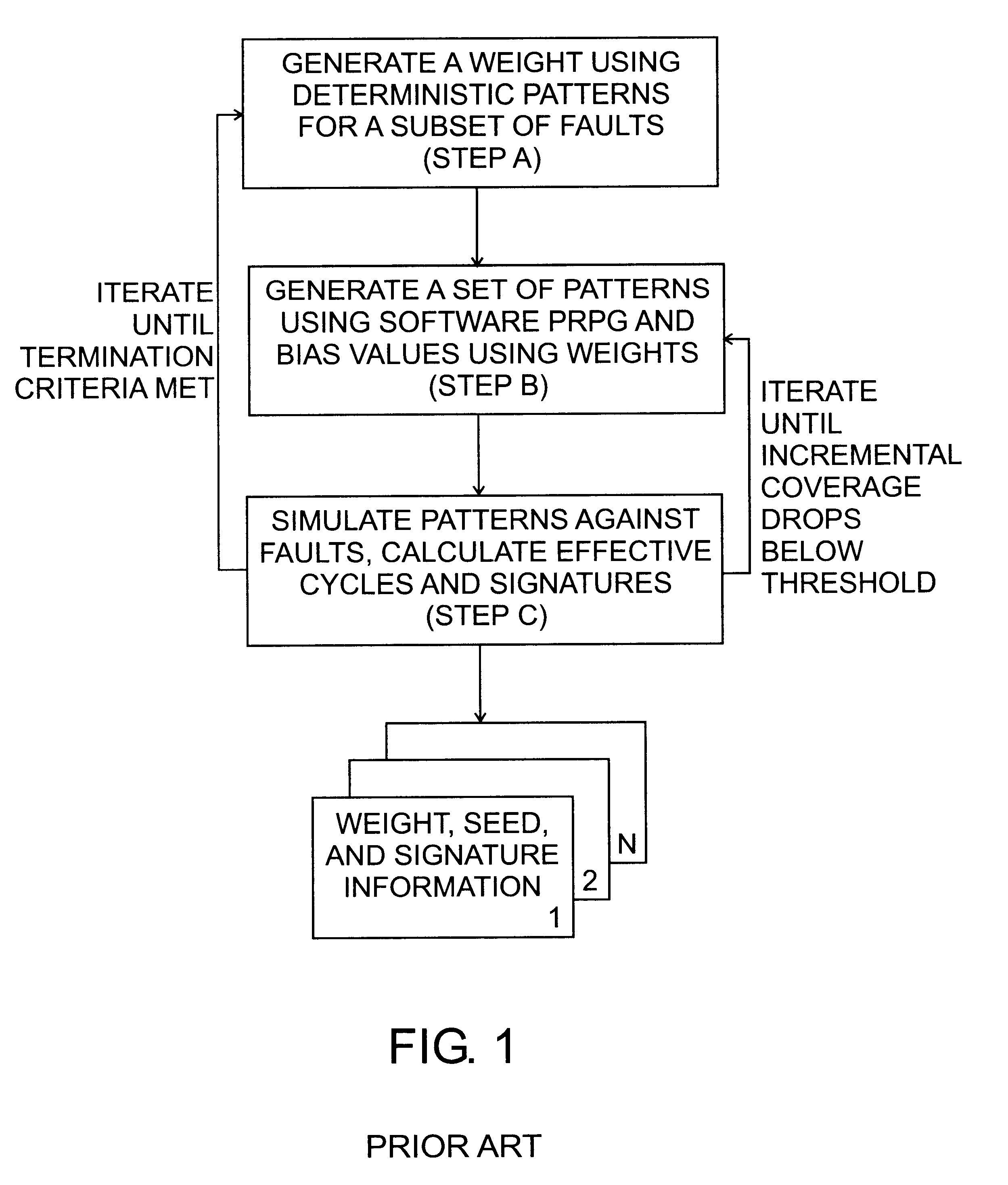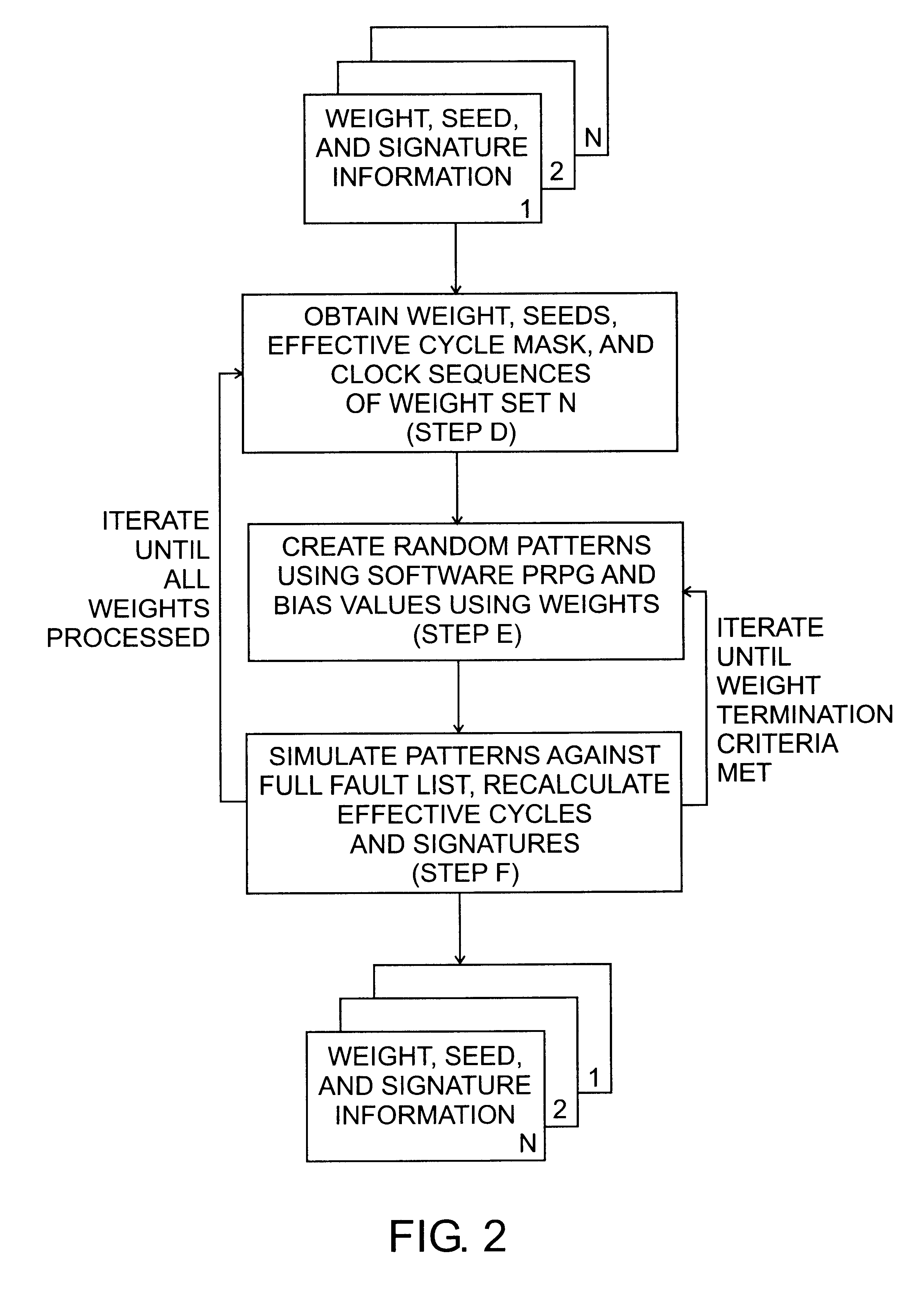Method for improving the efficiency of weighted random pattern tests through reverse weight simulation using effective pattern masks
- Summary
- Abstract
- Description
- Claims
- Application Information
AI Technical Summary
Benefits of technology
Problems solved by technology
Method used
Image
Examples
Embodiment Construction
Referring now to FIG. 2, there is shown a simplified flow chart of the process according to the present invention.
By reversing the order (last to first) of the original weight sets and resimulating the patterns generated from each weight set, values are created by the PRPG and simulated against a fully untested list of faults. Moreover, by allowing fault mark-off for only the originally effective patterns, per the original effective pattern mask, a significant reduction in required pattern count can be achieved. The steps of the inventive methodology include:
d) Determining the weight, effective pattern mask, seeds and clock sequence information from the last weight set generated from the original test data.
e) Again, using a software model of the PRPG and weighting hardware, creating a weighted random pattern (as in step b).
f) Simulating each pattern created in step e against a newly initialized (full) set of faults. However, this time, instruct the simulator to mark off tested fault...
PUM
 Login to View More
Login to View More Abstract
Description
Claims
Application Information
 Login to View More
Login to View More - R&D
- Intellectual Property
- Life Sciences
- Materials
- Tech Scout
- Unparalleled Data Quality
- Higher Quality Content
- 60% Fewer Hallucinations
Browse by: Latest US Patents, China's latest patents, Technical Efficacy Thesaurus, Application Domain, Technology Topic, Popular Technical Reports.
© 2025 PatSnap. All rights reserved.Legal|Privacy policy|Modern Slavery Act Transparency Statement|Sitemap|About US| Contact US: help@patsnap.com



